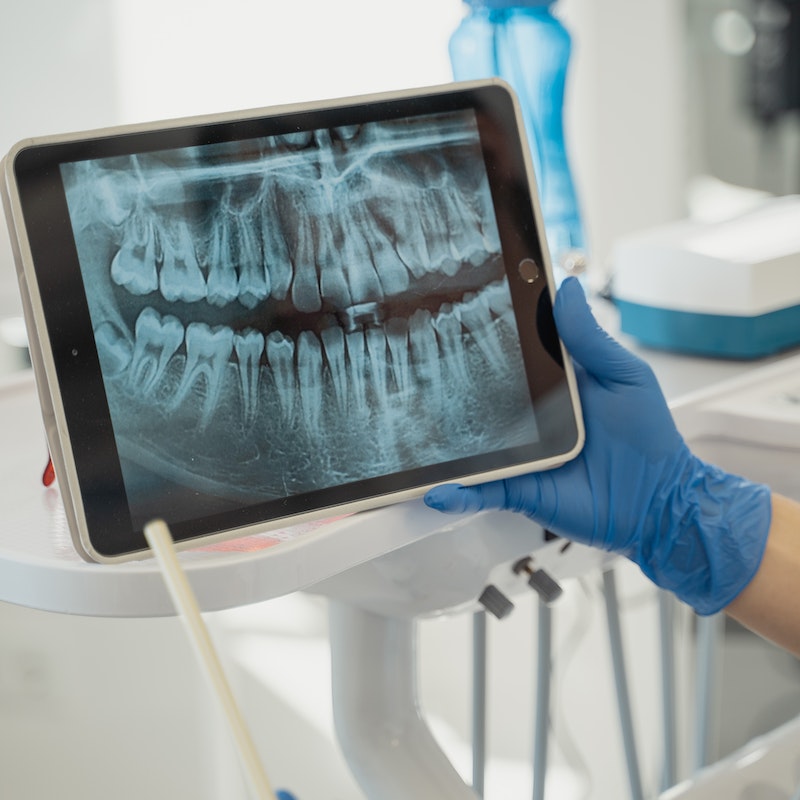Aug
22

Gums, also known as gingiva, play a crucial role in dental health; not only do they protect the underlying structures of our teeth, but changes in their colour or texture often serve as a barometer for oral health issues. The most common hue associated with healthy gums is a consistent pink, but variations in shade can occur. If you’ve noticed white gums around teeth or are pondering, “why are my gums white?”, then it’s pivotal to understand potential causes and implications. Let’s take a look.
Normal Gum Colour and Structure
Typically, healthy gums possess a coral pink hue. However, it’s worth noting that the ‘normal’ colour can vary among individuals: factors like ethnicity and pigmentation play a role, meaning some individuals might naturally have darker or lighter gums. The key is uniformity in colour and consistency without pronounced pale or white patches.
When it comes to structure, the typical structure of a healthy gum should be firm and should fit snugly around the teeth. When you run your finger over them, they should feel stippled, much like the surface of an orange. This unique texture indicates healthy gum tissue.
While receding or discoloured gums can be fixed with gum recession treatment, it’s important to understand why these issues occur, and fix any underlying problems with the help of a dental professional.
Common Causes of White Gums around Teeth
Gingivitis and its impact on gum colour
Gingivitis is a key cause of gum discolouration – but what is gingivitis? In short, gingivitis is the initial stage of gum disease, an inflammation resulting from the buildup of plaque on the teeth. This plaque hosts bacteria which, if not removed, releases toxins irritating the gum tissue and can also be a factor in tooth sensitivity.
While redness, swelling, and bleeding are the hallmarks of gingivitis, there can be instances where gums appear paler or even have white patches. In the progression of gum disease, the gums can recede, and the bone structure beneath might appear whitish, causing a pale gums around teeth appearance.
Oral candidiasis (oral thrush) and fungal infections
Another cause of gum discolouration is oral candidiasis, commonly known as oral thrush. This is a fungal infection that manifests in the mouth, and typically results from an overgrowth of the Candida fungus, which is naturally present in the mouth but can multiply excessively under certain conditions. White gums around teeth or creamy white lesions on the gums are classic symptoms of oral thrush, and these patches might resemble cottage cheese while also being accompanied by moderate pain and discomfort.
Leukoplakia and its association with white patches
Leukoplakia is a condition characterised by thick, white patches forming on the gums and inside of the cheeks. Unlike oral thrush patches, leukoplakic patches cannot be easily scraped off, and while the exact cause of leukoplakia is unknown, it has been closely associated with tobacco use in various studies. It’s essential to get these white patches checked, as in rare cases, leukoplakia can be a precursor to cancer.
Chemical irritants and allergic reactions
At times, the products we use for our oral hygiene routine might inadvertently lead to gum discolouration issues, as certain toothpastes, mouthwashes, or dental treatment materials can cause an allergic reaction in those with sensitive gums, often causing the appearance of white patches.
Furthermore, consuming hot beverages or foods that are too hot might cause a temporary burn, leading to a whitish appearance on the affected gum area. It’s crucial to be aware of any new oral products you’re using and monitor how your gums respond to them.
White spots due to gum recession
Gum recession is a phenomenon where the margin of the gum tissue surrounding the teeth wears away, or pulls back, exposing more of the tooth or the tooth’s root. This can cause pockets or gaps between the teeth and gum line, making it easy for disease-causing bacteria to build up. If a tooth or root appears through a receding gum, it might give the appearance of white spots.
Moreover, as the bone structure might appear whitish, a significant recession can give the gums a paler appearance. Such a condition not only affects aesthetics but also can lead to tooth sensitivity or even loss.
Accompanying Symptoms
White gums around teeth rarely manifest in isolation, and are usually accompanying symptoms that can provide a more comprehensive understanding of the underlying issue:
- Pain or Discomfort: This is a common symptom, especially if the cause is an infection, burn, or inflammation.
- Bleeding: Especially during brushing or flossing, this can indicate gingivitis or other gum diseases.
- Bad Breath: Persistent bad breath or a bad taste in the mouth can be a sign of bacterial infection or decay.
- Loose Teeth: Loose teeth are often indicative of advanced gum disease or bone loss, and should be investigated by a dentist.
Common Habits and Factors Affecting Gum Health
Ultimately, the health of our gums is deeply influenced by our daily habits and certain lifestyle factors. If you want to keep your mouth healthy and your smile bright, here are some key points to take into consideration:
- Tobacco Use: Both smoking and chewing tobacco can irritate the gum tissue, leading to conditions like leukoplakia or even more severe gum diseases. Try to cut down how much you smoke, or quit entirely with the support of the NHS or your local GP.
- Poor Oral Hygiene: Inadequate brushing and flossing can lead to plaque buildup, eventually culminating in gingivitis and other gum issues. Brushing twice a day with fluoride toothpaste – alongside daily flossing and occasionally using mouthwash – will help keep dental issues to a minimum.
- Excessive Alcohol Consumption: Alcohol can dry out the mouth, making it more susceptible to bacterial infections and gum diseases. Drink responsibly, while also making sure to take extra care of your teeth on days when you may be drinking alcohol.










